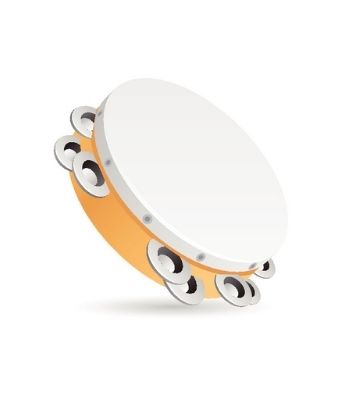Tambourine

Family
Percussion
Description
With a name that means, “the hitting of one body against another,” instruments in the percussion family are played by being struck, shaken, or scraped. In the orchestra, the percussion section provides a variety of rhythms, textures and tone colors. Percussion instruments are classified as tuned or untuned. Tuned instruments play specific pitches or notes, just like the woodwind, brass and string instruments. Untuned instruments produce a sound with an indefinite pitch, like the sound of a hand knocking on a door. The percussion instruments are an international family, with ancestors from the Middle East, Asia, Africa, the Americas and Europe representing musical styles from many different cultures.
The tambourine is a shallow, handheld drum made of a circular wooden frame with a calfskin or plastic drumhead stretched across the top. The tambourine has small discs called jingles set into its circular frame which produce sound when the tambourine is shaken, rubbed, or struck on the drum head with the knuckles. Early tambourines were played by Turkish army musicians known as “Janissaries.ā Mozart first used the tambourine in his music in 1782.